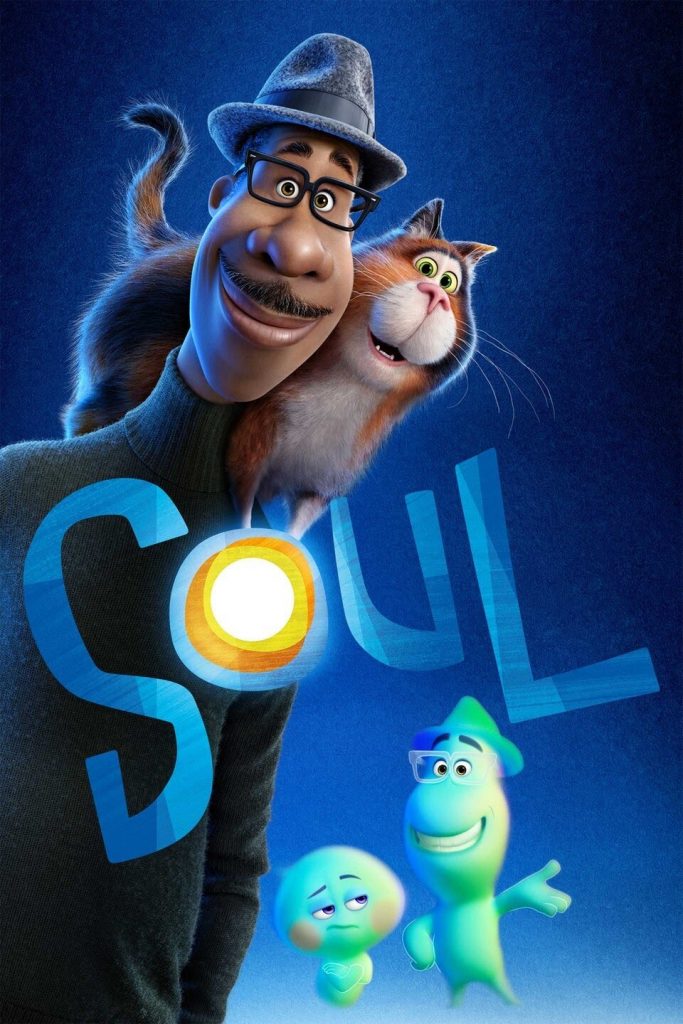“Soul”—The Spirit of Rebirth

Guest Blogger: Mahshid Zamani Bozorgnia, film critic
[Edited by Diana Y. Paul]
Soul, an animated and complex film from Pixar directed and created by Pete Dokter (who also created “Toy Story”, “Inside Out” and “Monsters Inc”), refers to the jazz music genre and tackles the theme of what is the spirit or soul, the distinction between passion and obsession, and what constitutes the “spark” of happiness.
There is something compulsively watchable and comforting about Pixar movies with their photo-realistic imaginary worlds. But there is much more. There are built-in philosophical questions of life and death and self-identity embedded in the story, which appeal to adults with the openness of a child.
The main character, Joe Gardner–an African American middle school music teacher (who, like his father, is passionate about jazz music)–deals with the choice of wanting to make a living or following his passion. But this decision-making entails an existential life crisis.
(One finds traces of the transcendental philosopher, Ralph Waldo Emerson, with some of his actual words adopted into the film’s dialogue.)
Joe, an ambitious pianist aspiring to accompany one of the great saxophonists, Dorothea Williams, feels that his life has been, at best, ordinary, and more likely an epic failure. In order to understand Emerson’s view that “there is no object so foul that intense light will not make it beautiful,” Joe has to rebuild himself. And what can be a better metaphor for being reborn than actually dying and coming back?
In Soul, the Great Beyond and the Great Before, –the interstitial space between life and death– are the universe’s recycling of nature and soul. Joe is not ready for the rare moment of “transcendence,” or “Great Before,” Yet, when he realizes that he either has to mentor a baby soul (called “22”) to be given “a new and unique personality” or go to the Great Beyond, he decides to stay and take the training in the “You Seminar”. During the presentation, the seminar instructor, Jerry, explains that souls are missing “the spark” and that they can only enter a body if they find that spark. Joe believes his spark is jazz and that his life can inspire other souls. Matched with recalcitrant soul number 22, who has never found her spark and has no desire to go to earth, Joe is determined that she is his ticket to rebirth.
Together, they enter the “the zone” that 22 defines as “the place between space and physical.” Baby soul 22 takes Joe to Moonwind, who tells them that he himself was once a lost soul: “There is not much difference between souls in the zone and lost souls: joy can turn into obsessions and some people cannot let go of their anxiety and obsessions, leaving them lost and disconnected from life.” However, Joe does not yet understand what Moonwind is saying.
Soon 22 sees the spark in every element in New York City, where they both temporarily land. From the smell of pizza to small seed pods, 22 is ready to get life on Earth, believing that she has found her spark, but Joe remains unconvinced. After a sensational performance with Dorothea Williams, she recalls a story of a fish who was in the ocean and yet dreamed of getting to the ocean. This wonderful analogy is a turning point for Joe.
And if we believe that Emerson’s theories were mostly about the idea of America–“that its existence matters, not its past nor its future”–what better place for Joe to become a transparent eyeball and define for himself what success is than on the streets of New York City?
Availability: Disney+
Note: Certainly an important curriculum topic for college freshman. A very mature theme about what makes life worth living—may need to proceed with caution for some youth. Young children may not be that interested, especially in the beginning of Soul.

lenore gay
Hey,
I don’t tend to watch cartoons any more. My grandson has outgrown them, and I certainly have.
Hope all’s well with you. Working on a new manuscript and reading, have to do more research to go much further in the manuscript.